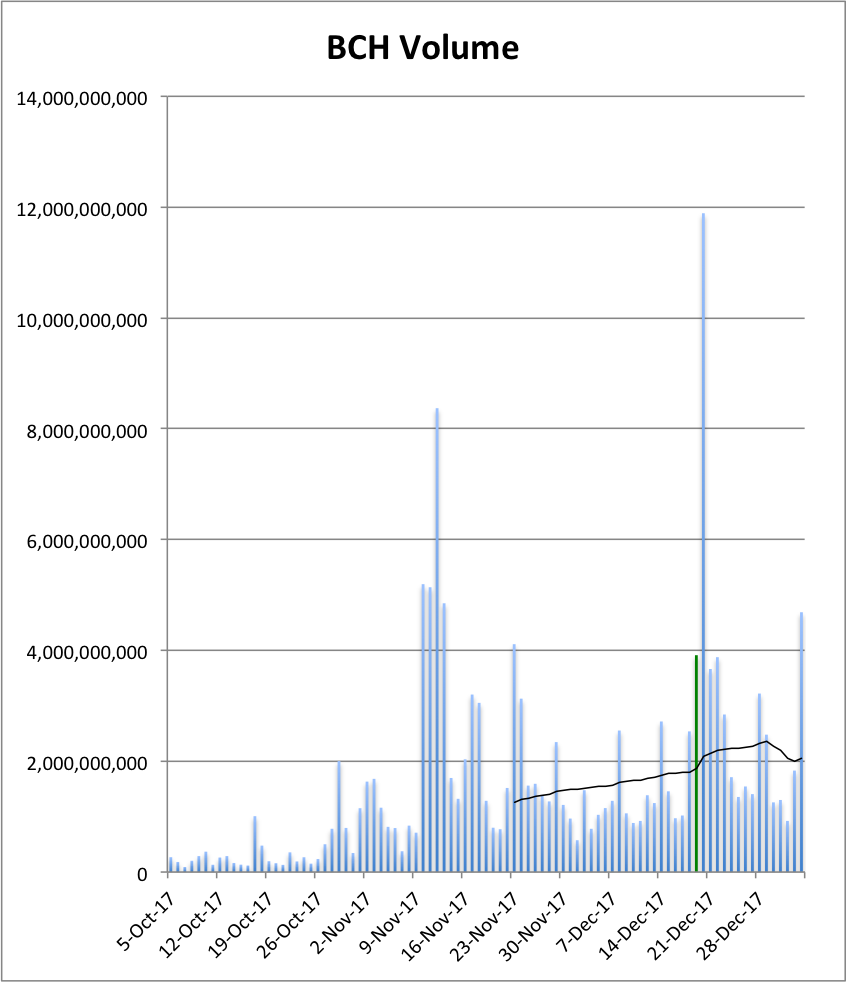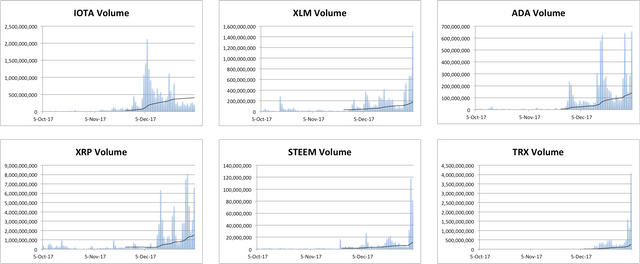Using Volume Flows to Anticipate the Next Addition to Coinbase and GDAX
Hi all, I have been trying to think of some (partially) reliable ways to predict which cryptocurrency will be added to Coinbase next.. I have decided to focus on the relative volume for each coin- my thinking is that as word gets around about the next coin to be added there should be a noticeable uptick in trading volume for that coin.

This chart shows the daily traded volume, in USD, for Bitcoin Cash. The single green column indicates the day that Bitcoin Cash was added to Coinbase- December 19th. The black line is a 50 day moving average and, as you can see, the moving average was steadily increasing for the month prior to BCH's addition to Coinbase. This means the volume was higher than average right before the 19th of December. While this point may seem rather intuitive, I am elaborating on it to corroborate my initial claim that "as word gets around about the next coin to be added there should be a noticeable uptick in trading volume for that coin."
Below is a picture containing the same methodology as performed above but for a set of different coins- specifically for IOTA, XLM, ADA, XRP, STEEM, and TRX.
While charting gives some insight into this matter it is still rather qualitative. So, to get around that, I decided to compare the 7 day average volumes with their respective 50 day average volumes. To do this, I found the 7 day average volume for each coin and then divided it by its 50 day average volume. The coin with the largest resulting value should be representative of the coin that is seeing the largest relative increase in volume in the past week among the set of coins that I looked at.

As you can see, TRX had the highest 7 day average volume relative to its 50 day average volume. Some of the other coins that I screened were not far behind- STEEM, XRP, and XLM. Bringing up the rear was ADA and IOTA which somewhat surprised me.
I understand that this isn't the most sophisticated approach that can be used to analyze volume flows but I do plan on expanding my investigation into this in the future. Let me know what you think and, of course, constructive criticism and/or suggestions are always welcome- thanks!
good post thank's
no prob